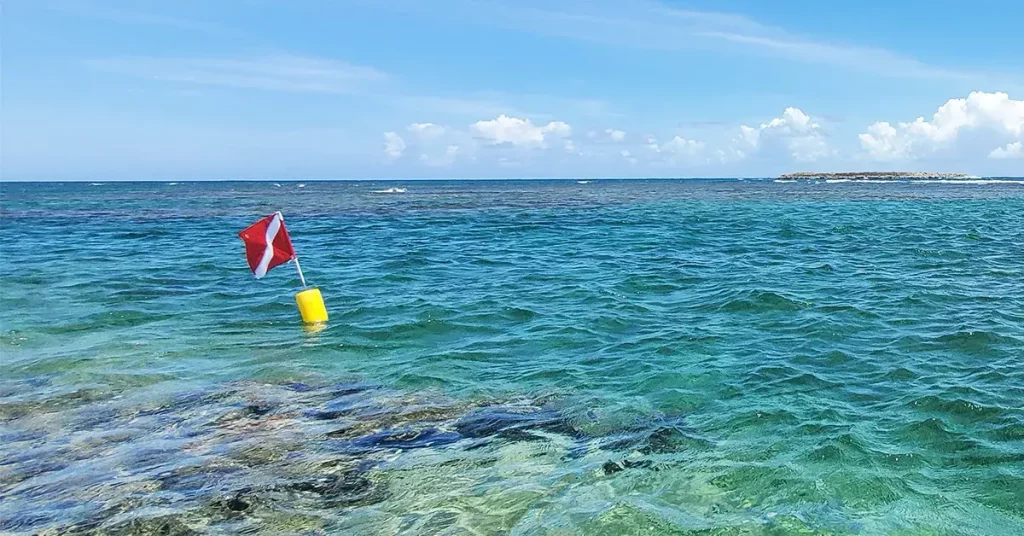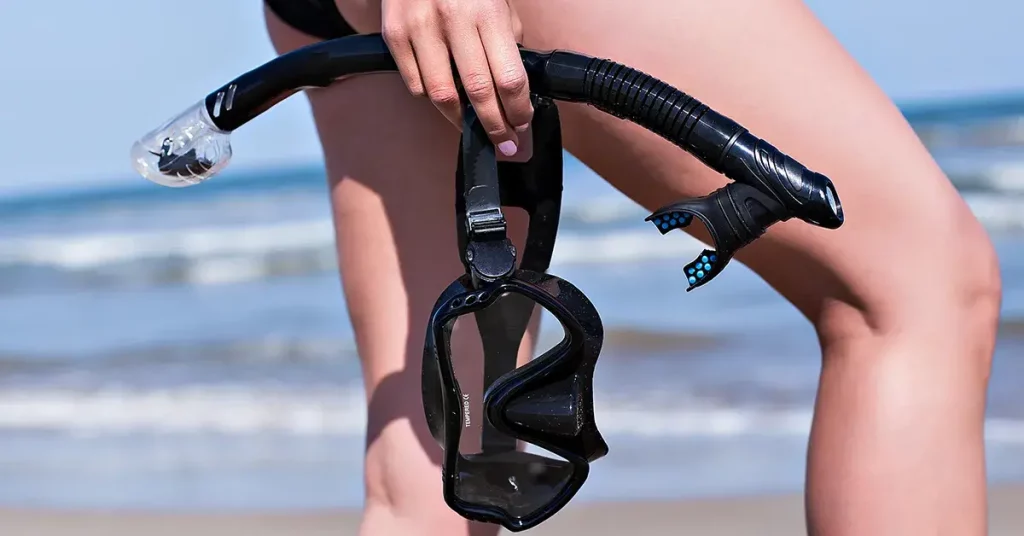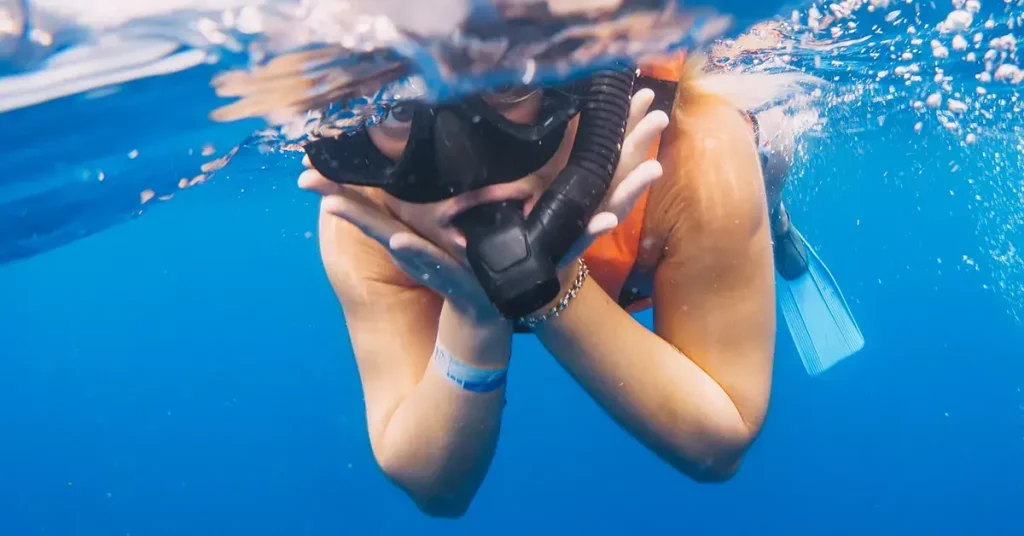Scuba diving and snorkeling are safe activities, but they come with risks. One of the most significant concerns is boat traffic. It’s too easy to be hit by propellers when surfacing or get run over by a boat, especially if you are at a shallow depth.
To keep safe, it’s critical to take precautions and let other vessels know there are divers in the water. But what indicates scuba diving or snorkeling activity?
How To Know if There Is Scuba Diving or Snorkeling Activity
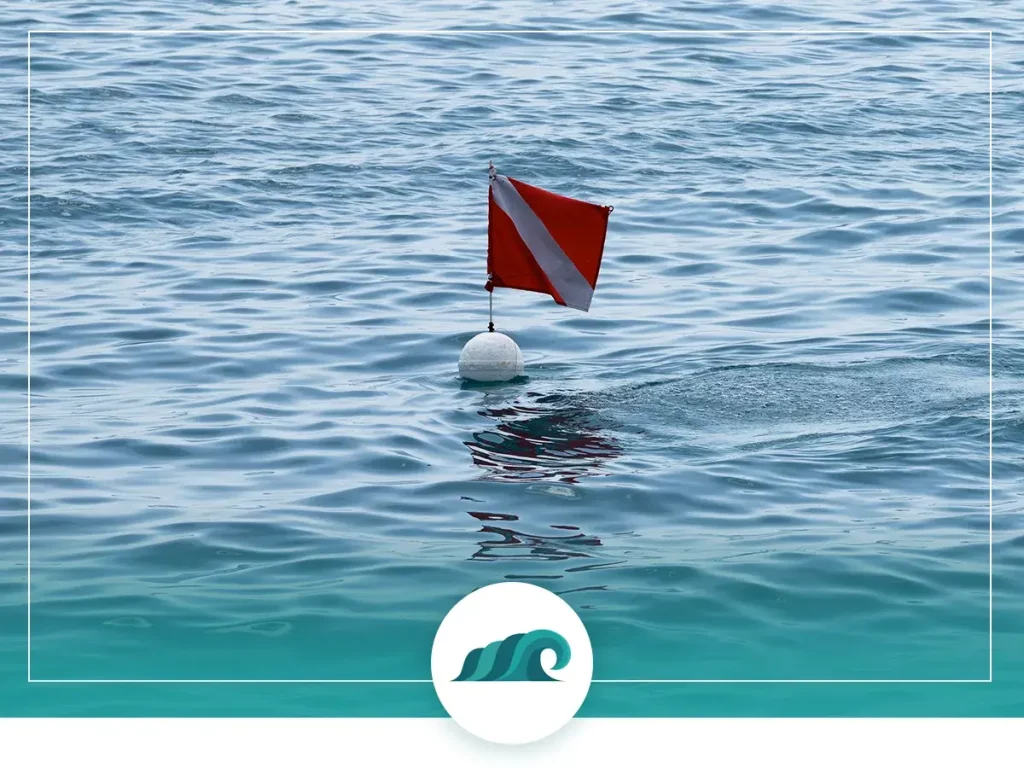
Scuba diving or snorkeling activity is not apparent to other boats. While things like bubbles on the water surface and flashlights shining underwater are good clues, you have to look for them and be close to the diver to see them. A more reliable way of demarcating your diving area is flying a nautical flag known as a diver down flag.
There are many kinds of nautical flags. They were created to allow for easy communication between vessels, even if their captains come from varying corners of the world and speak different languages. Nautical flags use the International Code of Signals (CIS) to communicate things and look the same no matter where you are.
There are two types you should know about when it comes to diver down flags.
Diver Down Flag
The first is a red flag with a diagonal white stripe called the diver down flag. You may have seen it on land already, as it’s a ubiquitous dive shop or dive center item from North America. Most scuba divers know what the white stripe running across the red background means when they see it.
However, the diver down flag provides more than just decoration. When flown on dive boats, a diver down flag indicates that divers are below the surface. This dive flag warns other boaters to keep their distance, which provides invaluable protection to divers who are surfacing or close to the water’s surface.
Alpha Flag
The alpha flag is the second of the two flags, which is blue and white. Whereas the diver down flag is universally known in the diving world, the alpha flag is an international symbol that any skipper would recognize.
However, it works to the same effect. Essentially, it means that a vessel has divers in the water and therefore has restricted mobility. An alpha flag is a clear signal telling others to steer clear.
European divers originally used alfa flags. When the time came to include a diver-specific flag in the nautical code, the Inter-Governmental Maritime Consultative organization chose to continue using it because it also serves to protect the boat from collisions.
What Flag Indicates Snorkeling Activity?
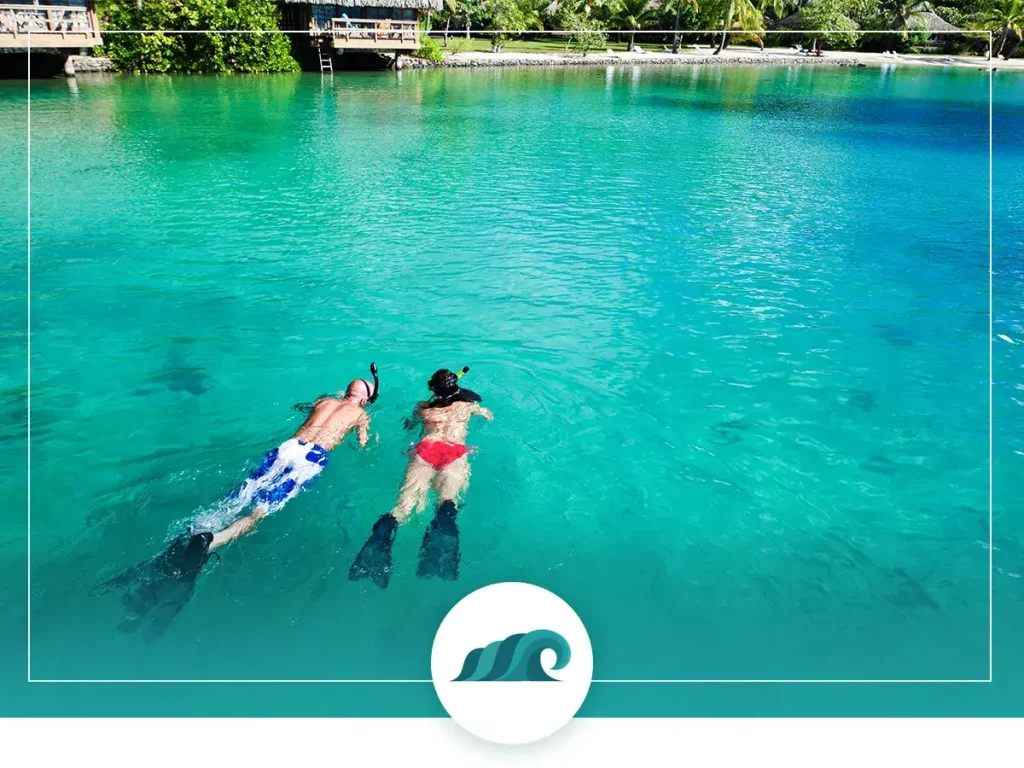
Diver down flags are more common in scuba diving, so you might wonder, “which of the following indicates scuba diving or snorkeling activity?” The answer is that you should display either one of the diver down flags, regardless of whether the activity is snorkeling or diving.
However, there is an exception to the rule. No flags are needed for snorkelers if the area is reserved for swimming.
How Far Away Should Other Boats Stay?
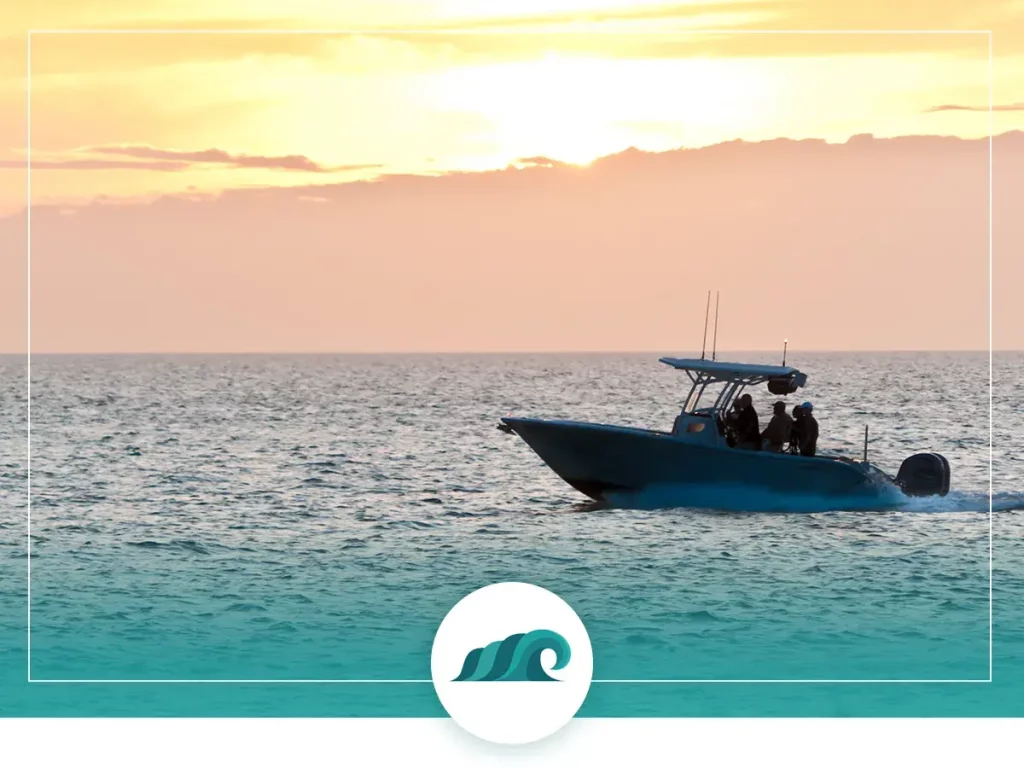
Diver down flags tell other vessels to stay away, but how far away should they remain?
In open water, boaters should stay at least 300 ft or 90 meters away. The distance is less when boating in rivers, inlets, or navigation channels. In these areas, vessels should maintain a distance of 100 ft or 30 meters from the boat flying the flag.
As a diver or snorkeler, you should also stay away from vessels flying a diver down flag. Fishing expeditions use these flags, so you must remain fifty feet away to stay safe.
How to Use Diver Down Flags

Flying your diver down flags correctly is the best way to ensure others see them. Here’s what you need to know.
- Depending on where you are, your vessel may need to fly both flags when divers or snorkelers are in the water. They must be placed on the vessel’s highest point.
- Diver down flags should measure at least 20 by 24 inches. If you’re attaching it to a buoy, it should be at least 12 by 12 inches wide.
- Keep in mind that the flags should only be flown when divers are in the water, or people are snorkeling underwater. As soon as everyone is onboard again, remove the flags.
- Wondering whether to fly a diver down flag or an alfa flag? When in doubt, the safest option is to fly them both.
Other Snorkeling Safety Precautions
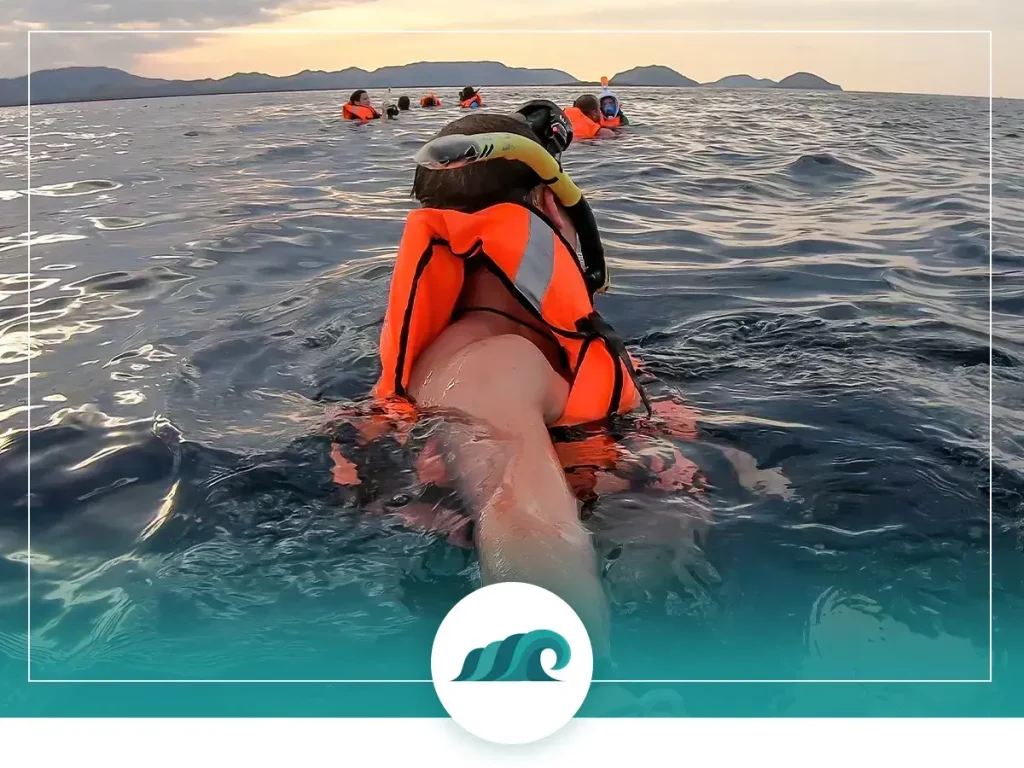
Although divers should take safety precautions, they spend less time where boats are likely to hit them. Snorkelers are a different story. Even though they float on the surface, seeing snorkelers can still be difficult or impossible. The sun’s reflection or even small waves may hide you, so taking extra safety precautions is critical.
Besides flying a diver down flag, here are some other ways to stay safe:
- If you leave marked swimming areas, be sure to tow a diving flag.
- Make yourself highly visible. Wear a reflective life vest, especially if you’re wearing a black wetsuit. Consider adding other lights or other reflective gear. Fluorescent green is one of the best colors for making yourself visible, but any bright fluorescent color will work.
- Don’t assume boats will see you. You may be more hidden than you think, or the captain may not be paying close attention. Look up if you hear a boat in the water to ensure it’s not coming toward you. If it is, you may need to wave and splash around to get their attention. Having a loud waterproof whistle is also a good safety measure.
Final Thoughts
Now you know what indicates scuba diving or snorkeling activity. The red and white and blue alpha flags are equally important, depending on your location. The main difference is the former is more common in North America, while the latter is universal.
So, putting them on display is crucial to keeping your dive vicinity safe, so use them appropriately.

